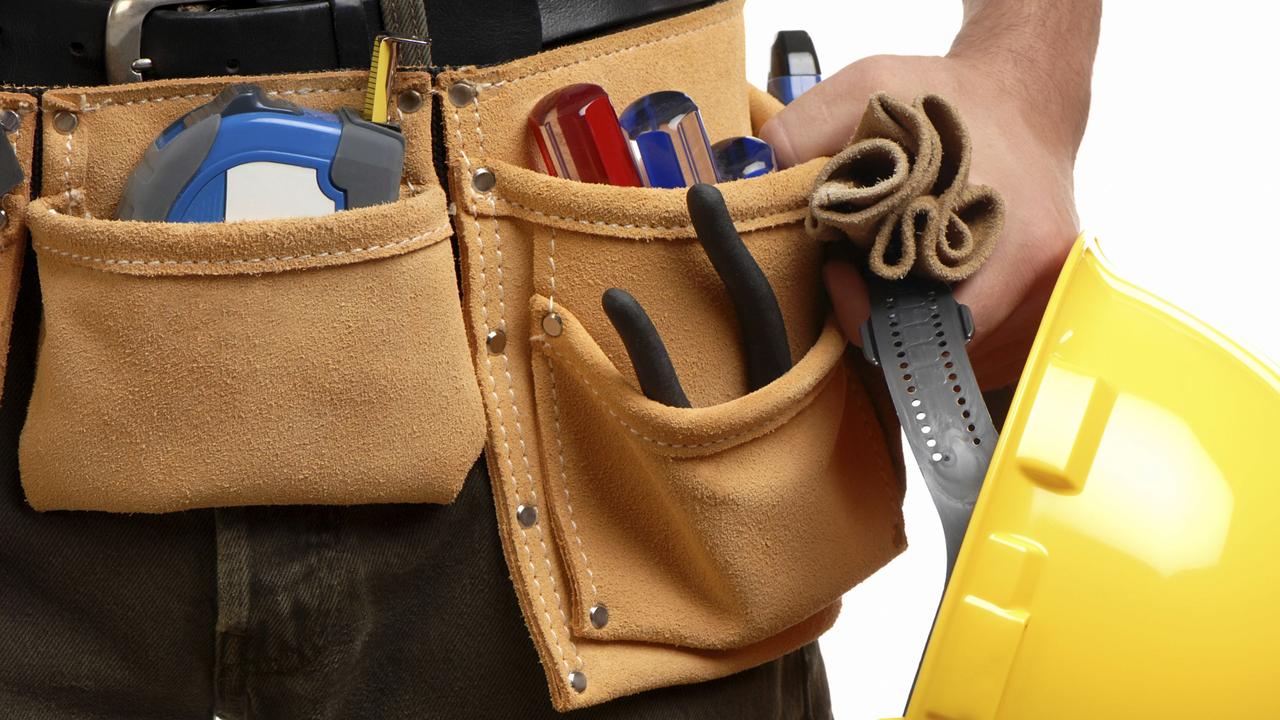Rare artefacts found in archaeological dig at Waymouth St site in Adelaide CBD
A TREASURE trove of South Australian history has been uncovered by an archaeological dig at an inner city site, before it becomes home to a towering apartment development.

SA News
Don't miss out on the headlines from SA News. Followed categories will be added to My News.
IT’S the archaeological proof of what South Australians have always known — that back to the very earliest days of our colony, we’ve been a classier citizenry than our convict neighbours on the eastern seaboard.
A painstaking dig in the heart of the Adelaide CBD, at a Waymouth St site earmarked for an apartment development, has uncovered the structural remains of the “new” Queen’s Theatre, built in the mid to late 1840s.
The 21-day project, completed on Thursday, also revealed a tavern, a tobacco importer’s warehouse, a horse bazaar and a deep well.
The “old” Queen’s Theatre, which dates to 1840, still stands next door, as if to oversee the exhumation of its younger sibling’s remains.
Because of the historical significance of the site, the developer of the U2 on Waymouth apartments had to commission an archaeological report and evaluation, which has been undertaken by EBS Heritage.

Excavation director Guadalupe Cincunegui said her team had unearthed artefacts covering more than 150 years of history. They include thousands of tobacco pipes, champagne bottles, ceramics and a beautiful water bottle, providing vital information not found in written records.
Ms Cincunegui said the story they told was of how different, and more affluent, Adelaide was in its early days, judging by the demand for luxury goods revealed by the dig. “What we get from this is people are drinking very different alcohol to the eastern states and (smoking) different types of tobacco pipes,” she said.
“People from South Australia are free settlers, so you’re going to get a different assemblage of artefacts (as) people were more affluent. This Seltzer water would have been very nice for that period of time and it’s a beautiful bottle.”
Ms Cincunegui said the artefacts helped paint a picture of how people used each part of the site in different periods.
“We basically go from the beginning of colonisation of South Australia, through to the 1920s and 1950s, up until the 1980s to where the site was being used as a carpark.
“By excavating this site we’ve worked our way back through those layers. We can see that, over time, the new Queen’s Theatre (was) extended a number of times, and it’s all information that we didn’t have previously.”

The excavation was not without its dangers. Early on in the dig, EBS workers were unaware they were standing on top of a 25m deep well, with heavy excavation machinery placed just metres away from the 19th century hole.
Ms Cincunegui said wells and cesspits often provided exceptional finds — in this case a rare Dutch pipe found inside.
“The bottom of a cesspit is an absolute goldmine,’’ she said.
“Firstly, people drop things down there and nobody is going to go in there and get them — things like dentures, glasses and coins. This pipe would have been really valued and would have been brought to Australia by someone from Europe.”
But it’s not only wells and cesspits the team had to look out for.
Under foot, there were hundreds of broken ceramics and pieces of clay pipe, with strong winds revealing important finds as the Sunday Mail toured the site on Thursday.


One was a fragment of a Willow-pattern ceramic — Willow being a Chinese-style ceramic pattern popular in late 18th century England. Ms Cincunegui identified it from the faintest of faded marks on what was once most likely a decorative plate.
Enough artefacts to fill more than 100 boxes will now be sorted.
They will then be washed and catalogued before some are returned to the site’s developer, Datong, to be displayed in the new apartment building when it is completed. The rest will be handed over to the SA Museum.
Soil samples have also been taken throughout the stages of the dig, allowing the team to find out more about the vegetation growing in the area prior to colonisation.
“We can send those samples off to determine what sort of plants were here ... we can even get an idea of what the land was like before it was colonised,” Ms Cincunegui said.
Datong construction manager Peter Bermoser said the excavation had revealed the many prior uses of the site.
“It has allowed us to date the areas of the site and how it worked in with the Queen’s Theatre and how it was used over time,” he said.
“This is valuable information that will be available for generations now.”

Tony Jachmann, project manager for Built Environs, the company contracted to build the apartments for Datong, said this level of excavation and historical recording had not been attempted previously in Adelaide.
“The detail that they’ve gone into is like nothing else done in Adelaide before,” he said
“It’s quite remarkable the care and detail they have gone into and the extent of the dig is really pleasing, especially that Datong have really respected Adelaide’s history and understand the past.”
But, now the excavation is done, they can concentrate on the future.
Construction of the 27-storey U2 on Waymouth, at 114-122 Waymouth St, is expected to be completed in early 2019.
One-bedroom apartments start at $298,000, through to a three-bedroom option at $597,000.


